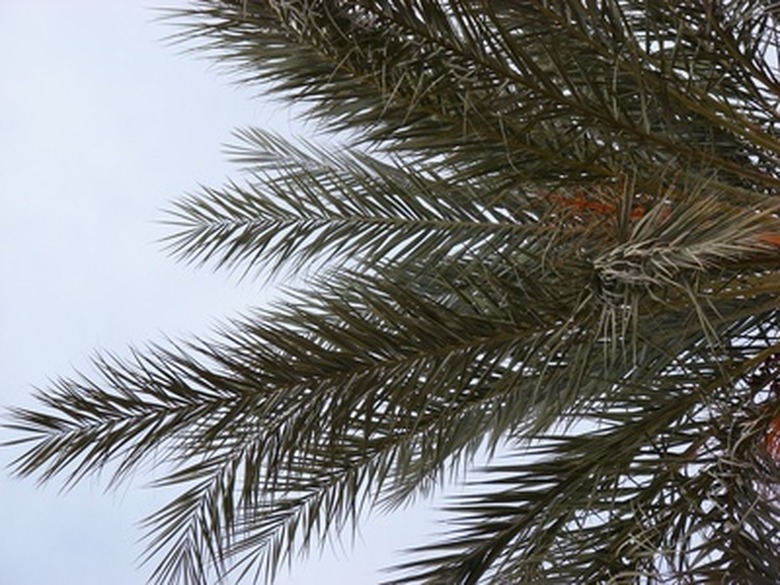Diseases Of The Pygmy Date Palm
The pygmy date palm, or Phoenix roebelenii, is an attractive small palm tree often grown as a houseplant. The United States Forest Service describes this plant as "one of the finest of the dwarf palms." It can grow as tall as 12 feet, but normally stays smaller when grown in a container. Although it produces small dates when it's grown in the appropriate conditions, don't expect your houseplant to provide any food. There are a handful of diseases that commonly affect the pygmy date palm.
Leaf Spot
Fungal pathogens cause this condition, which is similar to other fungal diseases that affect the pygmy date palm. Young trees are considered likely hosts for leaf spot disease, according to the University of Florida. One common type of leaf spot is called Graphiola leaf spot, or false smut. Small spots begin on leaves as water-soaked lesions that later change to yellow, grey, red-brown or black, often encircled with a different colored ring. You can help to avoid the leaf spot diseases by keeping the area around your pygmy date palm clean and by keeping old fronds pruned to improve air circulation. Fungicides are also effective in combating leaf spot diseases, but be sure to combine any chemical treatment with good cultural practices.
- The pygmy date palm, or Phoenix roebelenii, is an attractive small palm tree often grown as a houseplant.
- Fungal pathogens cause this condition, which is similar to other fungal diseases that affect the pygmy date palm.
Pestalotiopsis Fungus
The Pestalotiopsis fungus seems to prefer the pygmy date palm to many other species of plants, especially in Florida, according to the University of Florida. The fungus affects the tree's leaf blades and petioles and can later cause bud rot. Watch for signs of spots on the leaves of your palm; they begin small and yellow, then grow larger and become brown or black, and sometimes turn grey with a black area surrounding them. It also forms lesions on the petiole and rachis. To avoid this disease, keep your palm's growing area raked of all fallen fronds and other plant material and make sure you fertilize your tree correctly to keep it strong and better able to fight off diseases. Fungicides can also help, but the University of Florida recommends that they not be used without other cultural methods, such as keeping the area clean.
Sooty Mold
The coconut mealybug can cause a disease called sooty mold to grow on the leaves of pygmy date palms. The fronds become yellow and then develop a fuzzy coating that looks like soot. The coconut mealybug favors plants of many species, especially those that receive lots of fertilizer, according to the University of Hawaii College of Tropical Agriculture. This insect lives only in tropical climates, so if you live in a temperate area and grow the pygmy date palm as a houseplant, you needn't worry about this pest attacking your plant and causing a disease. If you live in a tropical climate and notice this insect, immediately spray your palm with insecticidal soap.
- The Pestalotiopsis fungus seems to prefer the pygmy date palm to many other species of plants, especially in Florida, according to the University of Florida.
- The coconut mealybug favors plants of many species, especially those that receive lots of fertilizer, according to the University of Hawaii College of Tropical Agriculture.
Rachis Blight
Also called petiole blight, this fungal disease has similar symptoms to the other fungal diseases that can afflict pygmy date palm trees and other palms. Rachis blight causes discolored streaks or lesions on the petioles of older fronds. The petiole is the stalk that connects a leaf to its stem. This disease does not affect the leaf tissue itself. Knowledge about this disease is scarce, says the University of Florida, so they advise gardeners to use good methods of sanitation around plants and make certain they are well watered, pruned and fertilized. Chemical fungicides may be effective in treating Rachis blight.
